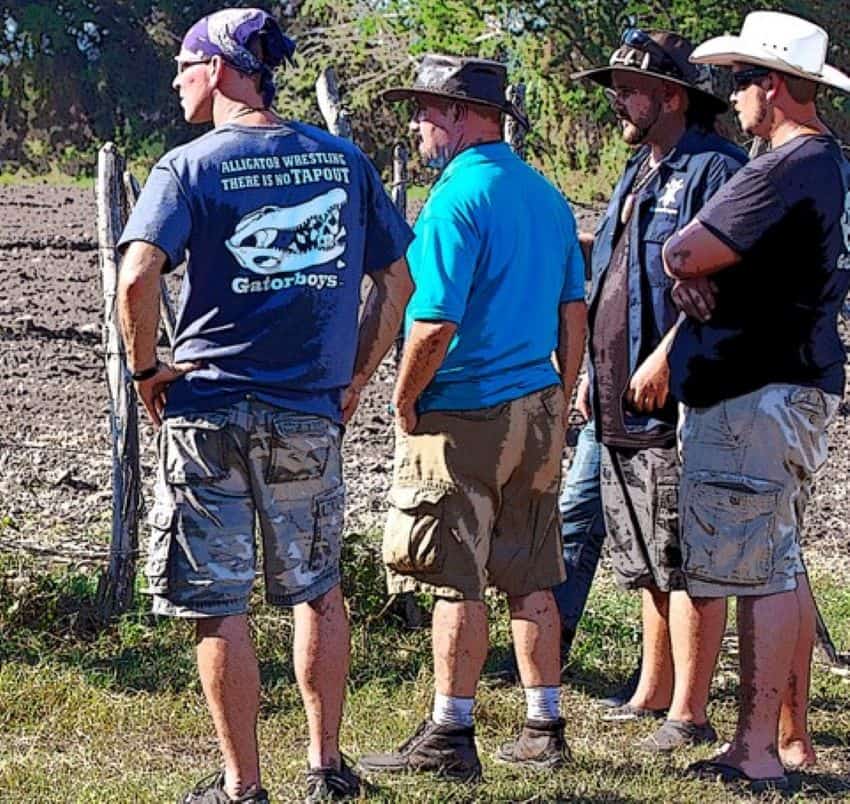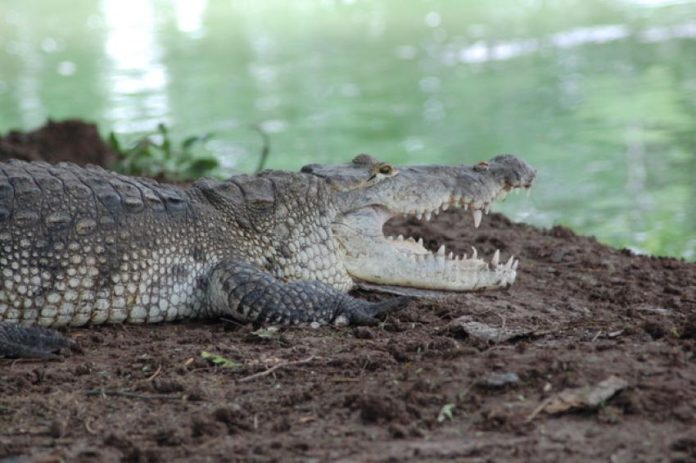Many a crazy scheme has been pondered by friends sharing a few drinks in a setting conducive to lofty aspirations.
Our crazy scheme was to bring a reality TV show to Mexico. As the bar bill mounted, so did our dreams of something truly epic, a gripping and colorful portrait of life in Mexico.
However, the multitude of impediments became frighteningly obvious in the clear light of the following day. Still, we had had fun fantasizing the previous evening, and time spent with friends is never squandered.
Three years later, we revived the conversation, and it suddenly became something with potential, something damn near viable, something that could come to pass within our lifetime.
My Hollywood friend who has been involved in reality TV (an oxymoron) was the executive producer and director of a show called Gator Boys. There are not any alligators on the west coast of Mexico, but there are plenty of crocodiles. We just needed a feasible scenario to get the ball rolling.
The theme of the Gator Boys was to capture nuisance alligators in the suburbs of Florida and release them back to the wild. Since crocodile management in this part of Mexico is handled with automatic weapons, we could make a case for the humane treatment of native wildlife.
Our first step was to create a need, so we went to the local aquarium, which has much more than fish tanks and performing seals. I knew Jorge, the director of Acuario Mazatlán, because I had earlier taken several swims in his shark tank, all for good causes.
It was my job to get a meeting with the director of the aquarium and then let the show’s producer deliver the sales pitch. At the end of an hour, we had a letter from the aquarium asking the Gator Boys for help to humanely remove problem crocs in the area.
Several years later, Jorge confided to me that at the time, he thought we were seriously delusional.
With our formal request from Mazatlán to train aquarium personnel on how to safely capture crocodiles, the show’s producer went to The Discovery Channel and pitched the project. The response was guarded but sufficiently positive to generate a “to do” list for the next step.
Because the aquarium is part of the municipality of Mazatlán, its approval was at the top of the list. My first meeting was with the deputy mayor, which went well enough that a meeting with the mayor was set up for the following week.

The director of the aquarium, The Captured Tourist Woman (TCTW) and myself were ushered into the mayor’s office to explain our plan to showcase Mazatlán with great publicity at no cost to the city.
Tourism in Mazatlán had dried up during former president Felipe Calderón’s drug war. Cruise ships had stopped coming, and the only thing the foreign press emphasized about the place was the body count.
A popular TV show, which played across the globe, could help to portray the city as a tourist-friendly destination, not a war zone. The aquarium director explained to the mayor that the local solution for crocodiles was several 30-round magazines of 7.62 mm emptied into the hapless reptile. He went on to say that a humane capture program would be seen as a beneficial and ecological action created and supported by Mazatlán.
During the director’s five-minute dissertation, the mayor was smiling and nodding; it looked like it was going well. When the mayor turned and asked me what a typical scenario would be, I told him we would sandbag each end of a street in the very popular and beautiful central historic area, fill the block-long street with water (to simulate the aftermath of a hurricane), and then turn a croc loose in the block-long pool. The store owner in the middle of the block would call the aquarium, and the Gator Boys, with trainees in tow, would come to the rescue.
The mayor was not smiling any longer. In fact, he looked to be seriously pissed off. He extended his right arm, making a gun with his hand, and in a loud voice went, “tatatatatata … tatatata,” emulating the sound of a machine gun as he raked us with his finger.
“The tourists are afraid to come to Mazatlán because they think the narcos will kill them and you want to put crocodiles in the streets of Centro Histórico?” he said.
I had to admit he had a good point.
The mayor finally gave us his blessing when we agreed that all the crocs would be captured out of town.
Now that we were properly sanctioned, again with an appropriate letter, I went to No. 2 on the list, finding a batch of amenable crocs to capture.
For the show to run its standard 43 minutes, our flatland rednecks needed to make at least four captures. We would find scenic “capture” locations, plant a crocodile and then stage a capture, which would “save” a nearby village.
My instructions from the producer were to find four large crocodiles — and one needed to be a monster. It became clear in time that my Hollywood friend was promising the Discovery Channel people something named Godzilla, a monster that was eating village dogs and goats; women and children would soon be next.
The plan was for the Boys to come a week early so that we could capture several wild crocs to use in the staged scenes; I just needed to find them.
I contacted a friend who is a nationally recognized wildlife photographer. He agreed to take me to an estuary that he claimed to be full of crocodiles. The estuary is part of a shrimp farm cooperative and a government-protected habitat. The official crocodile count was above 800.
When we arrived at the estuary, I could see several dark shapes, which at first looked like partially submerged logs but were not. The road ended at a short causeway that crossed to a one-room brick structure. There were five men sitting under a covered patio.
In the center of the causeway sat an older Ford V8 engine with a pump on one end and a generator on the other. We crossed, and I explained that we needed four large crocodiles for a TV show called Gator Boys. Of course, the response was wide-eyed incredulity.
Then one of the men stepped forward and said he knew of the show. He volunteered the group to help in any way they could. When we further explained we needed to actually catch the crocs, they thought we were joking and all laughed appropriately.
We clarified that it would be the Gator Boys who would do the actual catching and that I just wanted them to show us where the armored predators took their siestas on dry land. At that point, I asked about the possibility of finding a really big crocodile and was pleasantly surprised when they all nodded their heads in unison while giving each other knowing glances. Deranged gringos are always quite entertaining to the locals.
Will we be eaten by a pack of hungry crocs? Will Godzilla pose for pictures? Will our crazy scheme actually work? These questions and more will be answered in the next chapter of The Crocodile Chronicles.
The writer describes himself as a very middle-aged man who lives full-time in Mazatlán with a captured tourist woman and the ghost of a half-wild dog. He can be reached at [email protected].
